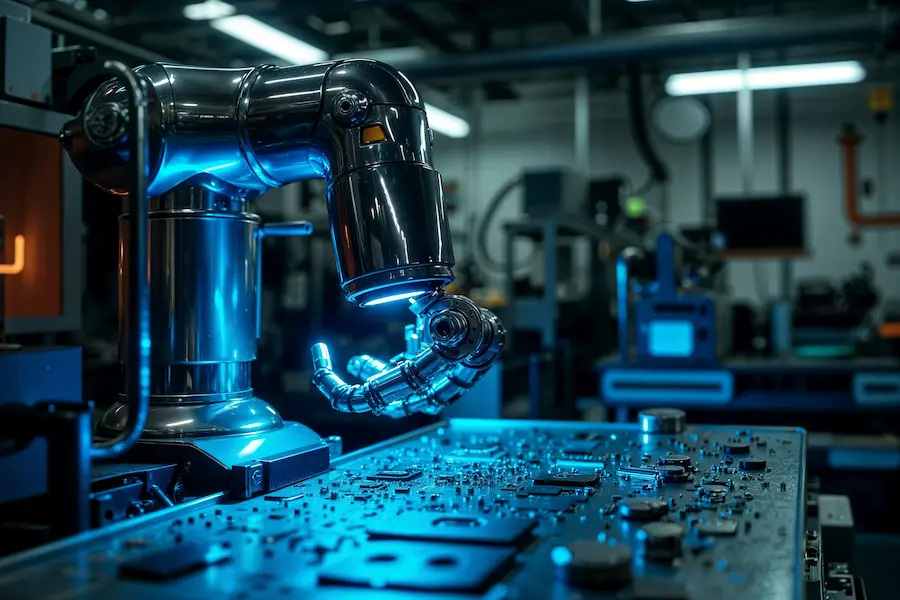An automation lab is a space where systems are designed, tested, and implemented to automate repetitive tasks, streamlining workflows and reducing the need for manual intervention. By leveraging automation, businesses can shift focus from mundane tasks to strategic decision-making and innovation, ultimately boosting efficiency and productivity.
Automation isn’t just a buzzword; it’s a transformative approach that allows businesses to scale without sacrificing quality. Whether you’re in healthcare, finance, manufacturing, or research, automation can revolutionize your business operations and free up resources for more critical activities. In this article, we’ll explore what an automation lab is, the key technologies behind it, and how you can build and scale your own.
Why Automate Your Business? The Benefits of Setting Up an Automation Lab
Automation offers much more than time-saving it’s a powerful tool that can reshape your entire operation. Here are the top reasons to set up an automation lab:
1. Time-Saving
Automating repetitive tasks like scheduling, data entry, and email responses can significantly reduce the time spent on low-value work. This allows your team to focus on high-impact tasks such as problem-solving and innovation.
2. Error Reduction
Manual processes are prone to errors, especially when tasks are repetitive. Automation ensures consistent results and minimizes the risk of human error, enhancing the accuracy of your operations.
3. Boosted Productivity
With automation handling the repetitive work, your team can focus on tasks that require creativity, strategic thinking, and higher-value interactions, leading to greater overall productivity.
4. Improved Quality and Consistency
Automated systems perform tasks with precision, ensuring that every step is executed with the same level of quality. This consistency is vital in industries like healthcare and bioanalysis, where accuracy is crucial.
Core Technologies Behind Automation Labs
Automation labs rely on advanced technologies to create efficient workflows and reduce manual involvement. These technologies include Robotic Process Automation (RPA), Artificial Intelligence (AI), and Machine Learning (ML).
1. Robotic Process Automation (RPA)
RPA is designed to automate repetitive, rule-based tasks such as data migration and processing forms. It’s ideal for business functions that involve large volumes of structured data.
2. Artificial Intelligence (AI) and Machine Learning (ML)
AI and ML enhance automation by enabling systems to learn from data and make decisions based on patterns. For example, AI can predict customer behavior, optimize inventory levels, or analyze lab test results for quicker diagnostics.
How to Decide Whether You Need an Automation Lab
Before implementing automation, it’s important to assess if it’s the right fit for your business. Use this decision framework to evaluate whether automation can bring real value:
Step 1: Identify Repetitive Tasks
Start by listing tasks that are repetitive, time-consuming, and error-prone. These are prime candidates for automation.
Step 2: Evaluate Technical Feasibility
Check if your current systems can integrate with automation tools. Some legacy systems might need updates to support automation.
Step 3: Analyze Your Budget
Automation requires an initial investment, so it’s essential to assess whether your business can support the upfront costs. Don’t forget to factor in long-term costs such as maintenance and training.
Step 4: Calculate Return on Investment (ROI)
Automating routine tasks should lead to cost savings and increased productivity. Estimate the ROI based on the tasks you plan to automate.
Tools and Platforms You’ll Need for Your Automation Lab
To build a successful automation lab, you’ll need the right mix of cloud infrastructure, software tools, and automation technologies. These include:
Cloud Platforms:
Platforms like AWS, Google Cloud, and Microsoft Azure offer the infrastructure necessary for running automation systems remotely. This allows businesses to scale efficiently without investing in physical hardware.
Automation Software:
Tools like Zapier, Integromat, and UiPath enable the automation of various business workflows, from social media management to customer data processing.
AI and Machine Learning Platforms:
Advanced tools such as TensorFlow and Azure AI are essential for implementing smarter automation that learns from data and adapts over time.
Common Challenges of Automation and How to Overcome Them
While automation is incredibly beneficial, it does come with challenges that need to be addressed:
1. High Initial Costs
Automation systems often require significant upfront investment. However, they can offer long-term savings by improving efficiency and reducing labor costs.
2. System Integration
Integrating new automation systems with existing business processes can be complex. It’s crucial to choose tools that are easy to integrate or hire experts to help with the transition.
3. Employee Training
Implementing automation requires training your staff to use new tools effectively. Ensure that employees have the resources they need to master these systems.
Scaling Up Your Automation Lab
As your business grows, consider scaling your automation lab by automating more complex workflows. For example, integrate automation with customer relationship management (CRM) systems or use AI to optimize business strategies.
Wrapping It Up: The Power of an Automation Lab
Building and maintaining an automation lab is a smart investment that can save time, reduce errors, and enhance productivity. Whether you’re just starting or looking to scale, now is the perfect time to embrace automation. By carefully planning and selecting the right tools, you can revolutionize your business operations and set the stage for long-term growth.
Read Also:Electric Automation: 7 Powerful Benefits Transforming Industries Today
FAQs
What are the core benefits of setting up an automation lab?
Automation labs help businesses save time, reduce errors, boost productivity, and ensure consistent quality.
What technologies are essential for an automation lab?
Core technologies include Robotic Process Automation (RPA), Artificial Intelligence (AI), and Machine Learning (ML).
How do I decide which tasks to automate?
Start by identifying repetitive and time-consuming tasks that don’t require decision-making. These tasks are prime candidates for automation.
What challenges should I expect when setting up an automation lab?
Challenges include high initial costs, system integration, and employee training. However, these can be managed with proper planning and the right tools.
How can I scale my automation lab?
Begin by automating simple tasks and gradually expand to more complex workflows, such as sales and customer service processes.

